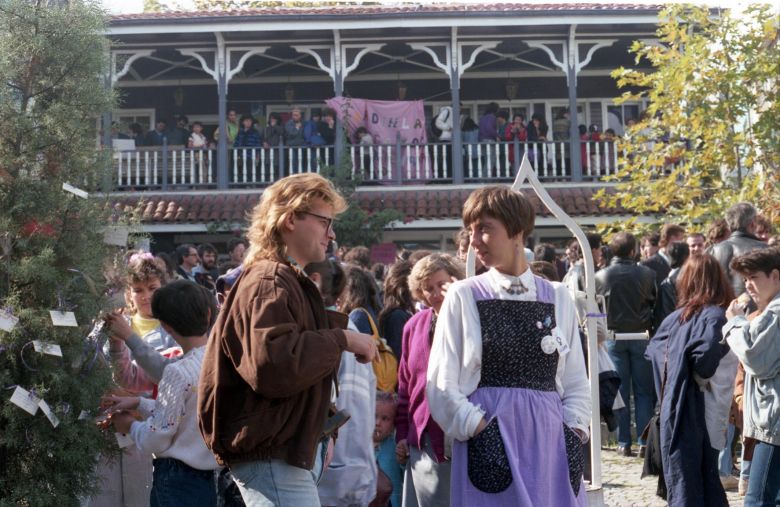How did we get here
Salt Beyoğlu, Salt Galata
September 3 – November 29, 2015

Solidarity Against Domestic Violence
04.10.1987, Chora Museum, Istanbul
Archive: Füsun Ertuğ
04.10.1987, Chora Museum, Istanbul
Archive: Füsun Ertuğ
To restore stability to the economy, on January 24, 1980, the government initiated a major program that marked Turkey’s transition to a free market system. An outcome of this decision saw Turkey’s longstanding import substitution policies replaced with an export-led growth economy. Soon after, the September 12, 1980 coup d’état suppressed all dissent and political opposition; rising state violence peaked so extremely it resulted in a termination of human rights. The 1982 Constitution, which was ratified by a referendum under grave pressure from the military regime, remains in place today with few amendments.
Neoliberal policies after the 1982 Constitution became the principles of the first civilian government Anavatan Partisi [Motherland Party] (ANAP) that came to power after the coup d’état. During its time in power from 1983 to 1991, ANAP supported a consumption oriented society; while the military regime kept blocking all oppositional movements and political organizations. Throughout the 1980s, the government, in collusion with the military, promised prosperity and liberation; while adhering to an authoritarian regime in social and political life.
After the quashing of trade unions and other political organizations by the military intervention and the 1982 Constitution, different forms of civil opposition and representation began to emerge in the first half of the 1980s. As the decade came to a close, civil society took an active role in democratization and began to challenge the status quo. People who lacked political representation, such as feminists, environmentalists, anti-militarists, gay rights activists, human rights defenders and many others, came together to form alternative groups. This solidarity, centered around democratic rights and demands for freedom, paved the way for new social organizations to emerge.
How did we get here traces the origins of the current context of Turkey at this turning point, in relation to the recent past and via elements of popular culture and social movements that took hold after the coup d’état. Works in the exhibition by Halil Altındere, Serdar Ateşer, Aslı Çavuşoğlu, Barış Doğrusöz, Ayşe Erkmen, Esra Ersen, and Hale Tenger deal with the political and cultural climate of the 1980s, to contribute a broader understanding of the national struggles and social dynamics it entailed.
This exhibition is part of the five-year program The Uses of Art – the Legacy of 1848 and 1989, organized by L’Internationale.

Neoliberal policies after the 1982 Constitution became the principles of the first civilian government Anavatan Partisi [Motherland Party] (ANAP) that came to power after the coup d’état. During its time in power from 1983 to 1991, ANAP supported a consumption oriented society; while the military regime kept blocking all oppositional movements and political organizations. Throughout the 1980s, the government, in collusion with the military, promised prosperity and liberation; while adhering to an authoritarian regime in social and political life.
After the quashing of trade unions and other political organizations by the military intervention and the 1982 Constitution, different forms of civil opposition and representation began to emerge in the first half of the 1980s. As the decade came to a close, civil society took an active role in democratization and began to challenge the status quo. People who lacked political representation, such as feminists, environmentalists, anti-militarists, gay rights activists, human rights defenders and many others, came together to form alternative groups. This solidarity, centered around democratic rights and demands for freedom, paved the way for new social organizations to emerge.
How did we get here traces the origins of the current context of Turkey at this turning point, in relation to the recent past and via elements of popular culture and social movements that took hold after the coup d’état. Works in the exhibition by Halil Altındere, Serdar Ateşer, Aslı Çavuşoğlu, Barış Doğrusöz, Ayşe Erkmen, Esra Ersen, and Hale Tenger deal with the political and cultural climate of the 1980s, to contribute a broader understanding of the national struggles and social dynamics it entailed.
This exhibition is part of the five-year program The Uses of Art – the Legacy of 1848 and 1989, organized by L’Internationale.


